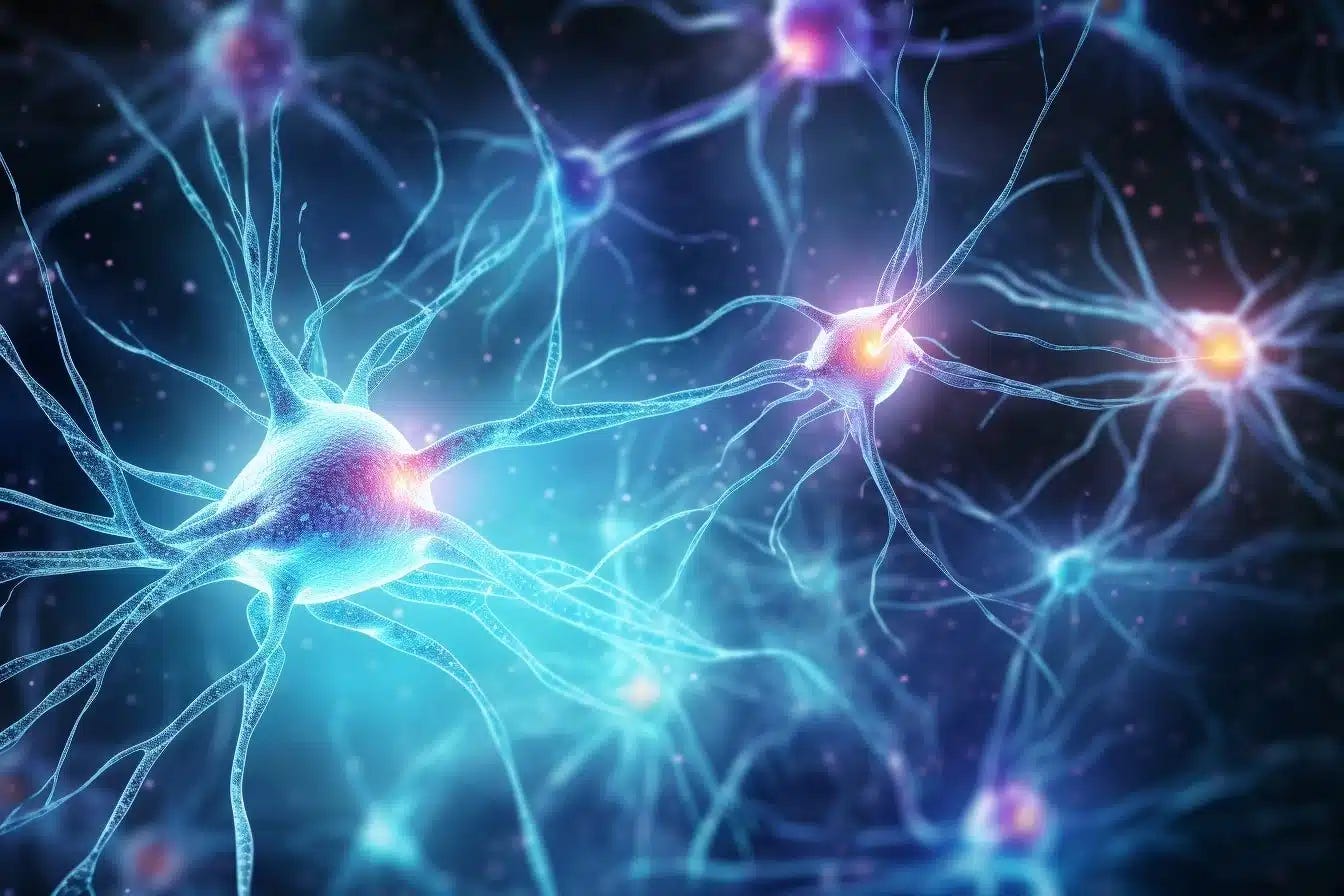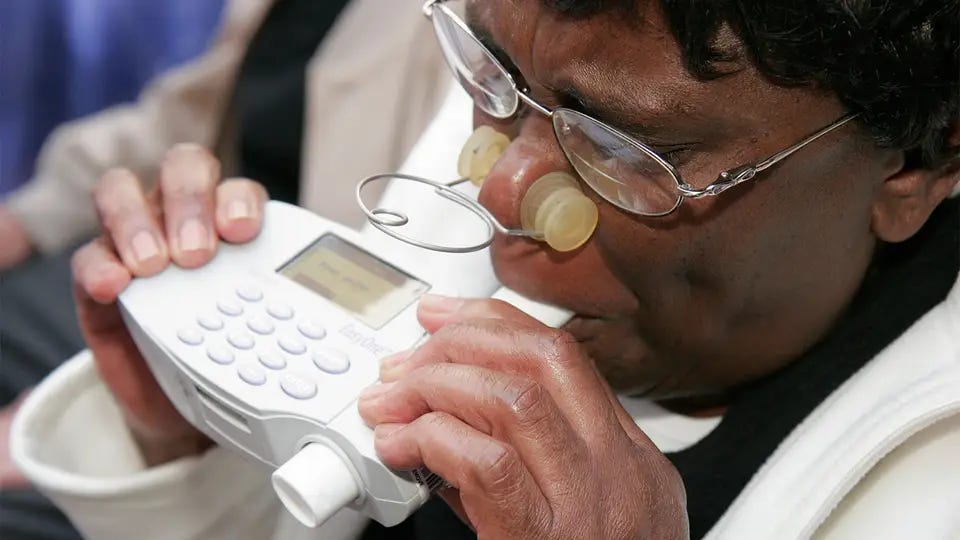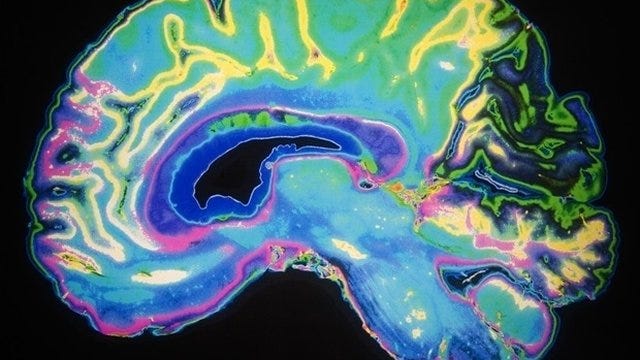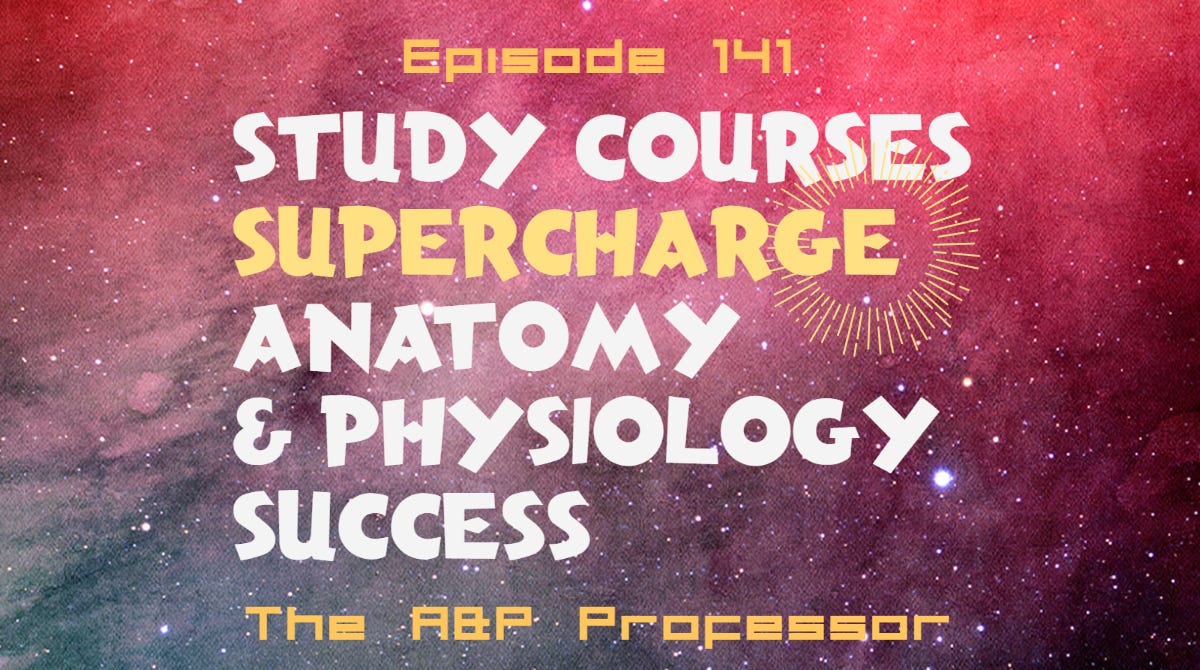Sci-Ed Update 285
Replacing SETs w/ something better, ancestry tests are "genetic astrology," the ebb & flow mechanism of learning, removing race from lung tests, blue legs in long COVID, a 30-sec experiment, & more!
Noisy A&P Classrooms and Labs

I'll never forget the feedback a dean gave me a few years ago when he visited my (then) new A&P supplement course. The feedback was memorable because it seemed to miss the whole point (learning outcomes) of the course!
That classroom-visit day was particularly chaotic and raucous. And I walked out on cloud nine, as did my students. How often does such enthusiastic and effective learning take place?
So when I later met with my dean after the classroom visit, I was eager for his feedback. Being a fellow A&P teacher himself, known for his informal and playful approach to both teaching and college administration, I thought he'd have enjoyed the experience. And he did. But he expressed concern about the potential of the class being "so close" to getting "out of control."
Yikes. The aspect of the class that I had thought went particularly well, was seen by him as a cause for concern. And this guy is a bright, insightful educator who is usually very constructive in any criticism he gives. Being the self-analytical dude that I am, I spent many months thinking about this. I even discussed it with teaching colleagues and former students—was I doing it all wrong?
Kevin Patton comment→ This is a snippet from a longer story that appeared in my blog a few years ago. I was reminded of it when I briefly referenced this story in Episode 141 of The A&P Professor podcast.
Read more→ AandP.info/mkf
Transforming Higher Education - Multidimensional Evaluation of Teaching
The overarching goal of this project is to advance educational practices by creating, aligning and sustaining effective evaluation strategies that promote the use of evidence-based instructional strategies. We simultaneously seek to advance understanding of the institutional change process by studying the adoption and integration of new approaches to evaluating teaching.
Kevin Patton comment→ We all hate SETs (student evaluations of teaching), right? And evidence shows that besides not really doing what we want them to do, SETs can do harm. What are some alternatives to SETs? Here’s and interest project.
Read more→ AandP.info/kfd
Hearing Aids Stave Off Cognitive Decline
Hearing aids may help maintain better brain functions in older people, and better health overall.
Kevin Patton comment→ This is a podcast episode that discusses new research that you recently spotted in an issue of the update newsletter.
Read more→ AandP.info/zkl
Ancestry tests are “genetic astrology.” We must re-learn everything we know about DNA and cells

From the laying out of the body plan to the organization and functioning of our nervous system, cells rule gene expression and make us who and what we are.
There’s immense allure to imagining connections to such remote peoples, places, and times, but ancestry tests are largely "genetic astrology."
If you go back far enough — and “far enough” isn’t all that long ago in human history — we’re all related to each other.
Our genes aren’t our identity, regardless of what the DNA testing companies say.
Read more→ AandP.info/lvb
Rethinking the Gut’s Neurons: Newly Discovered Neurons Upend Established Theory

Summary: Previously, scientists believed that the enteric nervous system (ENS) development stopped before birth. However, recent findings overturn this by showing ENS development continues after birth in mice and humans.
The study reveals a surprising mesodermal origin for a significant number of post-birth enteric neurons. This discovery has vast implications for understanding maturation, aging, and disease in the ENS.
Key Facts:
The ENS, or the gut’s neural system, produces the same neurotransmitters as the brain and plays a crucial role in digestion, immunity, and brain-gut communication.
BIDMC researchers documented the emergence and expansion of a novel population of enteric neurons derived from the mesoderm, which is the same lineage that produces muscle and heart cells.
This newly discovered lineage of neurons presents potential new drug targets, which can be manipulated to treat age-associated digestive issues.
Read more→ AandP.info/j8x
'Blue Legs' Yet Another Long COVID Symptom?

This week, media attention turned to a case report in The Lancetopens in a new tab or window detailing how a man's legs would turn blue after standing for about 10 minutes, which researchers said is likely related to his long COVID.
The 33-year-old man told doctors that for the past 6 months, his legs would feel progressively heavy, tingly, and itchy, and then would become "dusky" in color, according to medical student Nafi Iftekhar and Manoj Sivan, MD, of the Leeds Institute of Rheumatic and Musculoskeletal Medicine at the University of Leeds in England.
In addition, a petechial rash would occasionally appear on his feet, they reported. His legs would return to a normal color and the symptoms would go away when he would lay down.
Iftekhar and Sivan diagnosed the patient with "dysautonomia secondary to SARS-CoV-2 infection and associated with long COVID."
They explained the leg discoloration was acrocyanosis, or venous pooling and cutaneous ischemia, and suggested he increase his fluid and salt intake, and do muscle strengthening exercises.
"[C]linicians may not be aware of the link between acrocyanosis and long COVID," Sivan said in a statement. "We need to ensure that there is more awareness of dysautonomia in long COVID so that clinicians have the tools they need to manage patients appropriately."
Read more→ AandP.info/kc7
Removing Race-Corrected Pulmonary Function Tests May Alter Lung Cancer Care
Removing race correction in pulmonary function tests (PFTs) appeared to affect surgeons' recommendations for treatment among African-American patients undergoing lung cancer surgery, a quality improvement study showed.
FEV1 from preoperative PFTs are commonly used to determine surgical risk and to recommend treatment, and are often race-corrected for African-American patients. "As a result, the race-corrected percent predicted FEV1 is artificially higher than if a race-neutral (i.e., without race correction) predicted FEV1 were used," the authors noted.
In an invited commentary opens in a new tab or window, Araiye Medlock, BA, and David T. Cooke, MD, both of the University of California Davis Health in Sacramento, pointed out that the use of this practice perpetuates centuries-old racism.
"Race correction of PFTs is rooted in the myth created by slaveholders Thomas Jefferson and Samuel Cartwright that enslaved Black people had a 'deficiency' of lung capacity, with the goal of justifying the practice of slavery," they wrote. "The racist pseudoscience serves as the foundation and legitimation for race correction in current clinical practices, inevitably preserving this use of structural racism in healthcare."
Bonner and colleagues noted that their findings indicated that the path to eliminating race-corrected PFTs, while crucial, will be challenging in practice.
Read more→ AandP.info/qrt
Researchers discover the ‘ebb & flow’ brain mechanism that drives learning
Researchers have long thought that rewards like food or money encourage learning in the brain by causing the release of the "feel-good" hormone dopamine, known to reinforce storage of new information. Now, a new study in rodents describes how learning still occurs in the absence of an immediate incentive.
Led by researchers at NYU Grossman School of Medicine, the study explored the relationship between dopamine and the brain chemical acetylcholine, also known to play a role in learning and memory. Past research had shown that these two hormones compete with one another, so that a boost in one causes a decline in the other. Rewards were thought to promote learning by simultaneously triggering an increase in dopamine and a decrease in acetylcholine.
This sudden hormone imbalance is believed to open a window of opportunity for brain cells to adjust to new circumstances and form memories for later use. Known as neuroplasticity, this process is a major feature of learning as well as recovery after injury. However, the question had remained whether food and other external rewards are the only drivers for this memory system, or whether our brains instead are able to create the same conditions that are favorable to learning without outside help.
To provide some clarity, the study authors focused on when and under what circumstances dopamine levels are high at the same time as acetylcholine levels are low. They found that this situation occurs frequently, even in the absence of rewards. In fact, it turns out that the hormones constantly ebb and flow in the brain, with dopamine levels regularly raised while acetylcholine levels are low, setting the stage for continual learning.
"Our findings challenge the current understanding of when and how dopamine and acetylcholine work together in the brain," said study lead author Anne Krok, PhD. "Rather than creating unique conditions for learning, rewards take advantage of a mechanism that is already in place and is constantly at work," added Dr. Krok, who is also a medical student at NYU Grossman School of Medicine.
Read more→ AandP.info/pe5
Study Courses Supercharge Anatomy & Physiology Success
Get ready for a mind-bending rendezvous with Kevin Patton in Episode 141, where he continues to spill the beans on his top-secret recipe for student triumph. Brace yourself for this next adventure on his whirlwind tour of revolutionizing A&P 1 education, as we dissect the art of identifying student pain points, personalizing preparation, and serving up the kind of mentorship they've been yearning for!
This is the second of a two-part series on success courses developed by Kevin Patton—and proven to work!
To listen to this episode, click on the player (if present) or this link→ theAPprofessor.org/podcast-episode-141.html
Let’s Try an experiment! Really. Right now!
With the start of a new academic year, let’s see what happens when every subscriber shares this update newsletter with just one other A&P instructor.
If you read this newsletter, I already know how engaged in teaching and engaged in science you are! Why not share the fun with someone else like you?
You certainly know a colleague at your institution, or a nearby institution, or maybe a faraway institution, that would love to get a link from you that connects them to a free resource for updates in science and education, right?
Just click here!
Then answer the poll. (We’re scientists, we like to measure results, don’t we?)








